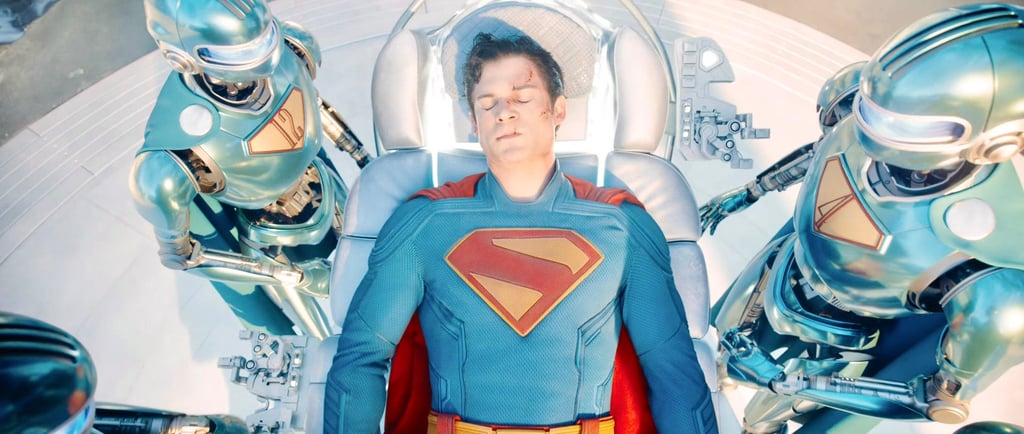Superman: A Myth Rebuilt from the Rubble
REVIEWS
Alaa Tamer
7/11/20254 min read


James Gunn and Zack Snyder are both talented filmmakers. They are also friends who worked together in the first movie for both of them (Dawn of the Dead). Love it or hate it, the two are the two most prominent auteurs in the superhero genre. However you think of “auteur theory,” whether you think like Truffaut that it’s what makes cinema a legitimate artform, or like Pauline Kael that the smell of a turd is more singular than that of a flower but not exactly better.
So, this review will have no Snyder comparisons. While you could argue that part of the mission statement of that film is responding to Snyder’s take, I’d argue it’s more of a response to Amazon Prime’s Superman. To Invincible and The Boys, the two hit shows from the streaming service of the bald, nerdy, billionaire businessman Lex… Jeff Bezos. This film is a deconstruction of the deconstruction, that tries to build something new, optimistic, and idealistic on top of the rubble (metamodernism?).
A Superman That Soars with Heart
Let’s start with the verdict. Gunn’s Superman is grand, exciting, and beautiful in every way possible — visually, technically, emotionally, and ideologically.
It is also a movie so stuffed with characters and plot elements that it begins after the main conflict already starts. What this translates to is the film starting in what feels like the second act of another film (with our hero at a literal rock… snow bottom), and then starting a linear three-act structure from there.
So technically, this film has two second acts, making Superman spend as much screentime laying on the ground as he is in the sky.
A Controlled Chaos: Gunn’s Crowded Canvas
Usually, when a film is crowded, we blame studio interference or clueless executives bending the filmmaker’s vision. But here, every single crowding element is from Gunn’s mind. He wanted it crowded, and he believed that directing many team movies made him equipped to handle many plot elements and characters.
You can see the gears of the machine working almost like a math equation, giving each element “enough” screentime, mini arcs, set-ups and payoffs, and cutting between them for pacing and momentum.
Superman’s editing jumps between many plotlines, each plotline divided by the rule of threes. Exactly like Lex in the film jumping energetically from screen to screen in his office, each screen giving him the view from one drone. (Most of the film feels like it was actually shot by drones.)
Does It All Hold Together? (Mostly, Yes)
Your taste may vary in how much Lex... Gunn pulls this off. I personally was very satisfied. All the lines are well made and occasionally transcendent, and they converge and converse well enough for them to not feel shattered.
Basically, it's a film that jumps from one good scene to another, with enough mathematical precision that makes nothing feel undercooked, and with enough of a unifying artistic vision shining from the smoke of all this friction. It’s as self-indulgent and grand as the Snyder Cut, but leaner and more colorful.
Not a Bug, but a Choice
And why can I safely say that all of it comes from Gunn himself?
Well, the start in the middle of the action comes from Gunn’s repeated, documented insistence that we’ve had enough of superhero origin stories. Some decisions here feel like direct responses to internet criticism (in a film occupied with internet criticism that finds screentime for Superman to discuss his own reaction to what the internet is saying about him).
Examples include the focus on the Daily Planet crew, and how Superman spends most of the action set pieces saving civilians rather than fighting. (This, and the droney/fisheye/hyperdynamic camera movements are what define the action scenes here.)
Surrounding Superman to Define Him
The introduction of other team characters and superheroes seems to:
a) define Superman by contrast — as in, “He is Superman because he is not like these other guys”
b) put Gunn more in his comfort zone — quirky, superpowered humans that are assholes, childish, cynical, or sarcastic sometimes, but ultimately have a heart of gold.
These are the kinds of characters Gunn built his career on. And the whole point of Superman the film is that Superman the character is different from them.
Defining a different Superman by using characters more familiar to Gunn as a mirror is an interesting “work smarter, not harder” solution, even if some argue their screentime takes away from Superman himself.
Themes, Commentary and a Dog
The film also finds (or looks for) time to deconstruct “Evil Superman,” interrogate Superman as a symbol of America, turn Luthor into another symbol of America’s worst impulses, and comment on how the MCU turned superheroes into military units.
All while self-inserting a dog based on his real-life rescue dog and dealing with his own personal feelings about being cancelled online.
It’s honestly a lot, and it’s a miracle that it all works (and for a lot of you, it won’t). But it’s very rewarding.
Gunn’s experience with writing team movies — movies that almost function as ensemble pieces — shows Superman’s goodness as being infectious. He actually inspires people around him to be better, stronger, and darer versions of themselves, even if Superman sacrifices himself a little to make the rest shine.
Moses, Not Jesus — and Why That Matters
One extra plus: Superman was created by two Jewish writers and was heavily inspired by Moses. Then subsequent Christian writers appropriated him and turned him from Moses into Jesus.
This Superman feels more like Moses.
I'll leave the Jewish audience to decide how Jewish this version of Superman feels (played for the first time in live action by a Jewish actor). But it would be another beautiful thing about this film — that the most Jewish Superman film is also one that takes heavy inspiration from the Israel/Palestine conflict… and sides with the pro-Palestinian cause.
